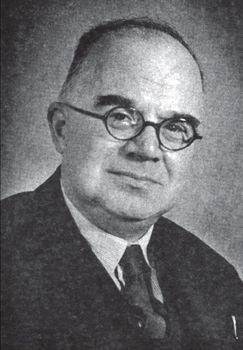Sir Reginald Edward Stradling
Civil Engineer who became a war hero and senior government advisor, Reginald Stradling, was Head of Civil Engineering, Architecture & Building at Bradford Technical College from 1922 to 1924.
 Reginald was born in Bristol in 1891. He felt
unable to pursue his boyhood ambition to
become a doctor due to his extreme short
sightedness. Instead he won a scholarship to
Bristol University and graduated with a BSc in
Civil Engineering in 1912. His degree had been
sponsored by the Surveyor’s Institution on
condition that he then qualified to become a
professional surveyor, so he spent the next 2 years
training with two local firms.
Reginald was born in Bristol in 1891. He felt
unable to pursue his boyhood ambition to
become a doctor due to his extreme short
sightedness. Instead he won a scholarship to
Bristol University and graduated with a BSc in
Civil Engineering in 1912. His degree had been
sponsored by the Surveyor’s Institution on
condition that he then qualified to become a
professional surveyor, so he spent the next 2 years
training with two local firms.
However at the outbreak of WWI he joined the
Royal Engineers where he became a Captain.
After distinguished service throughout the war,
which saw him awarded the Military Cross and
mentioned twice in dispatches, he abandoned his
plans to become a surveyor with the Institute’s
consent, and obtained a post as a Lecturer in Civil
Engineering at the University of Birmingham.
He then became Head of Civil Engineering,
Architecture & Building at Bradford Technical
College in 1922.
After 2 years he took up the post of Director of
Building Research in 1924, experimenting on
building and road construction. He left in 1939
to take up another government post, this time as
Chief Adviser, Research and Experiments, at the
Ministry of Home Security, where his important
work included air raid precautions. After the war
he advised the Home Office on civil defence and
became Chief Scientific Adviser to the Ministry of
Works in 1944, overseeing government housing
schemes. By 1949 failing health prompted him
to take up the less demanding role as Dean of
Military College of Science at Shrivenham.
As a teenager Reginald had felt disadvantaged
by his poor eyesight and he became intensely
shy as a result. But he overcame these obstacles
to became highly regarded for everything he
undertook. He was made a Companion of the
Order of the Bath in 1934 and was elected a
Fellow of the Royal Society and awarded the
Ewing Medal by the Institution of Civil Engineers
in 1943. He received a knighthood in 1945 and
2 years later was given the America Medal for
Merit for his work regarding atomic weapons
in 1947. He was an Associate Member of the
American Society of Civil Engineers, and an
Honorary Associate of the Royal Institute of British
Architects.
Sir Reginald died in January 1952.
Photograph courtesy of The Defence College of Management and Technology, Shrivenham